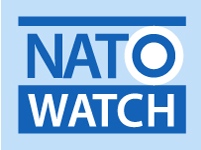By Ian Davis
13 February 2023
The number of known deaths from the devastating earthquakes that struck north-western Syria and southern Turkey on 6 February has climbed to over 24,000, with the toll expected to rise much higher in the coming weeks. The World Health Organization estimates that 23 million people, including 1.4 million children, may require long-term assistance.
The 7.8 magnitude earthquake in southern Turkey collapsed or severely damaged more than 12,100 buildings across 10 provinces – an area whose population is over 13 million. The Turkish government has declared a three-month state of emergency in the ten provinces. More than 53,000 Turkish first responders are currently on the ground and some 7,000 rescue workers from 75 foreign countries have come to help. These include more than 1,400 emergency response personnel from more than twenty NATO allies and partners – including invitees Finland and Sweden.
The assistance from NATO allies and partners includes search and rescue teams with rescue dogs, fire fighters and structural engineering teams, medical personnel and supplies, and seismic experts. This support is being delivered through NATO’s principal civil emergency response mechanism, the Euro-Atlantic Disaster Response Coordination Centre (EADRCC), which is active all year round and operates on a 24/7 basis.
Further, on 9 February 2023 NATO agreed to deploy fully-equipped semi-permanent shelter facilities— normally used by NATO as a deployable headquarters complex for exercises and operations— to Turkey, in order to help accommodate people displaced by the earthquakes. NATO’s Supreme Allied Commander Europe, General Christopher G. Cavoli, is directing the effort. The Strategic Airlift Capability, an independent pool of twelve partnering nations (all NATO member states), is also providing support to international search and rescue efforts in Turkey.
These are critical human security tasks that NATO has shown it can undertake with great professionalism and success, and the alliance offers capabilities that other organisations are unable to offer. NATO helicopters have been used to deliver supplies to other disaster zones and evacuate the injured; NATO command, control, and reconnaissance capabilities have been used to sustain humanitarian missions. However, it is difficult not to conclude that NATO’s efforts in this crisis have been inadequate to meet the scale of need, and that the alliance should be playing a larger role in disaster response. (This criticism could, of course, also be levelled at other UN and EU agencies).
The numerous and long-standing debates about ‘capability gaps’ within NATO have focused on traditional military concerns including insufficient air and sea transport to deploy European forces with their equipment; inadequate air-to-air refuelling; a lack of precision-strike, all-weather-offensive fighter capability and precision-guided munitions; insufficient reconnaissance and intelligence capabilities; inadequate deployable command and control; inadequate capacity to suppress enemy air defence; and shortfalls in secure, interoperable communications. The war in Ukraine has only sharpened calls for these ‘gaps’ to be filled. However, the shortfall in disaster relief capabilities is equally, if not more important.
First, NATO needs a larger and less costly civilian reserve component, with appropriate skills. Second, while civilian agencies should ultimately take the lead in coordination of disaster relief activities, the EADRCC needs to be expanded and more adequately resourced, And third, the NATO Response Force’s disaster relief capabilities should be enhanced so that it becomes a premier disaster response force. An expert group should be established within NATO to explore these and other options for strengthening NATO’s ability to deal with emergencies of either human or natural origin (or more likely a combination of both). Many more disasters are expected in the coming years because of environmental degradation and climate change, so this enhanced humanitarian mission would strengthen NATO’s purpose.
According to the UN’s Office for Disaster Risk Reduction, the number of natural disasters was 75% higher between 2000 and 2019 than in the previous 20 years: some 7,348 over the past two decades, up sharply from the 4,212 between 1980 and1999. Since 2000, natural disasters have affected more than 4 billion people, claiming 1.23 million lives and causing nearly $3 trillion in economic losses. One of the key reasons is global warming, as climate-related disasters have surged by 82% in the past two decades. NATO is increasingly paying attention to these challenges, as shown through the 2021 Climate Change and Security Action Plan. But it needs to be doing more to be ready to respond when any country is overwhelmed by a disaster.
Finally, while all of NATO’s focus has been on Turkey, a member state, the situation in the north- west of Syria is equally catastrophic. It is the last area held by rebels fighting the regime in Damascus, and UN humanitarian aid has been very slow to trickle in. The situation is being made even more difficult by Turkish President Recep Tayyip Erdoğan’s refusal to open border crossings so that international aid can reach Syria, and Bashar al-Assad’s insistence that all such aid must be under his control. The NATO Secretary General must demand that these border crossings are immediately opened and that aid gets to everyone in need, irrespective of their politics.
